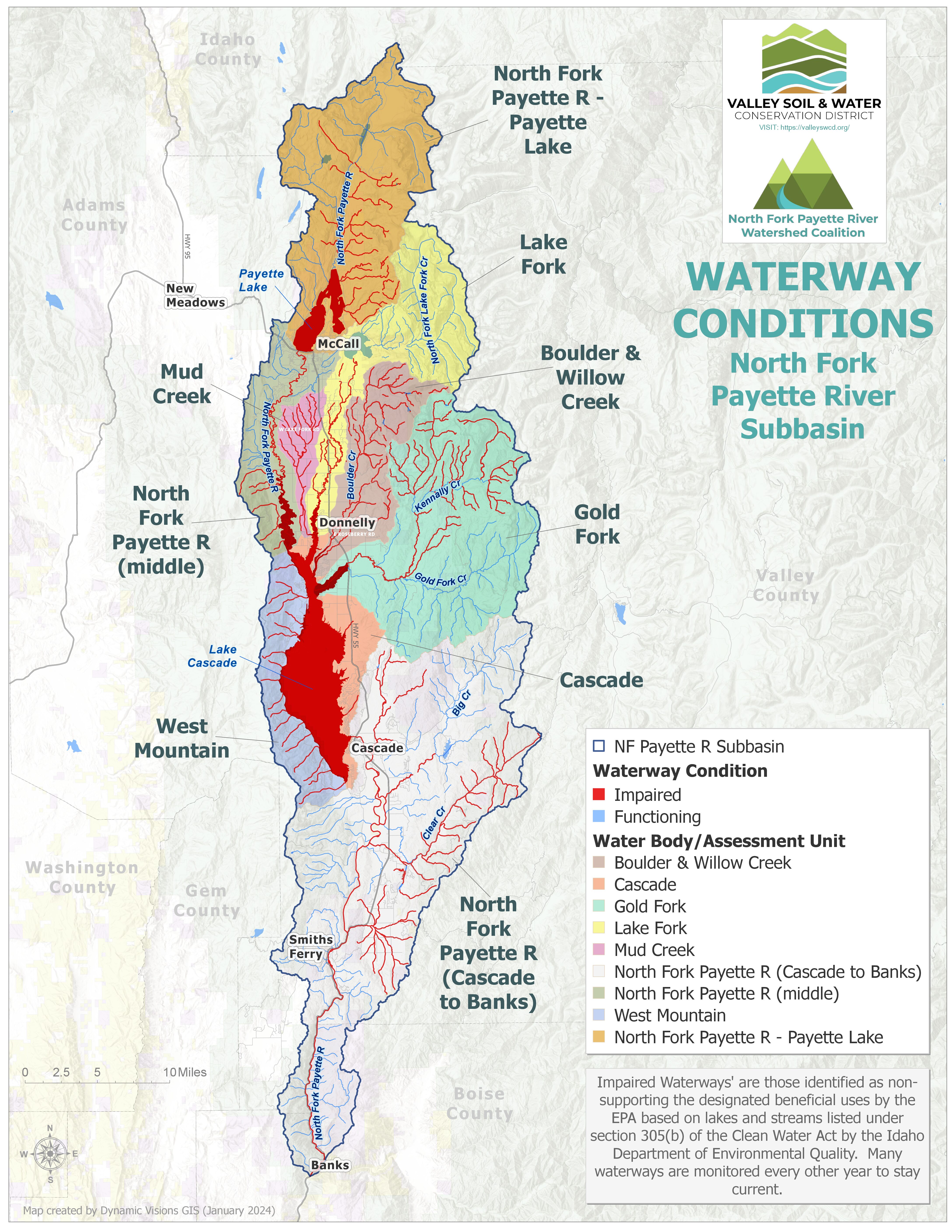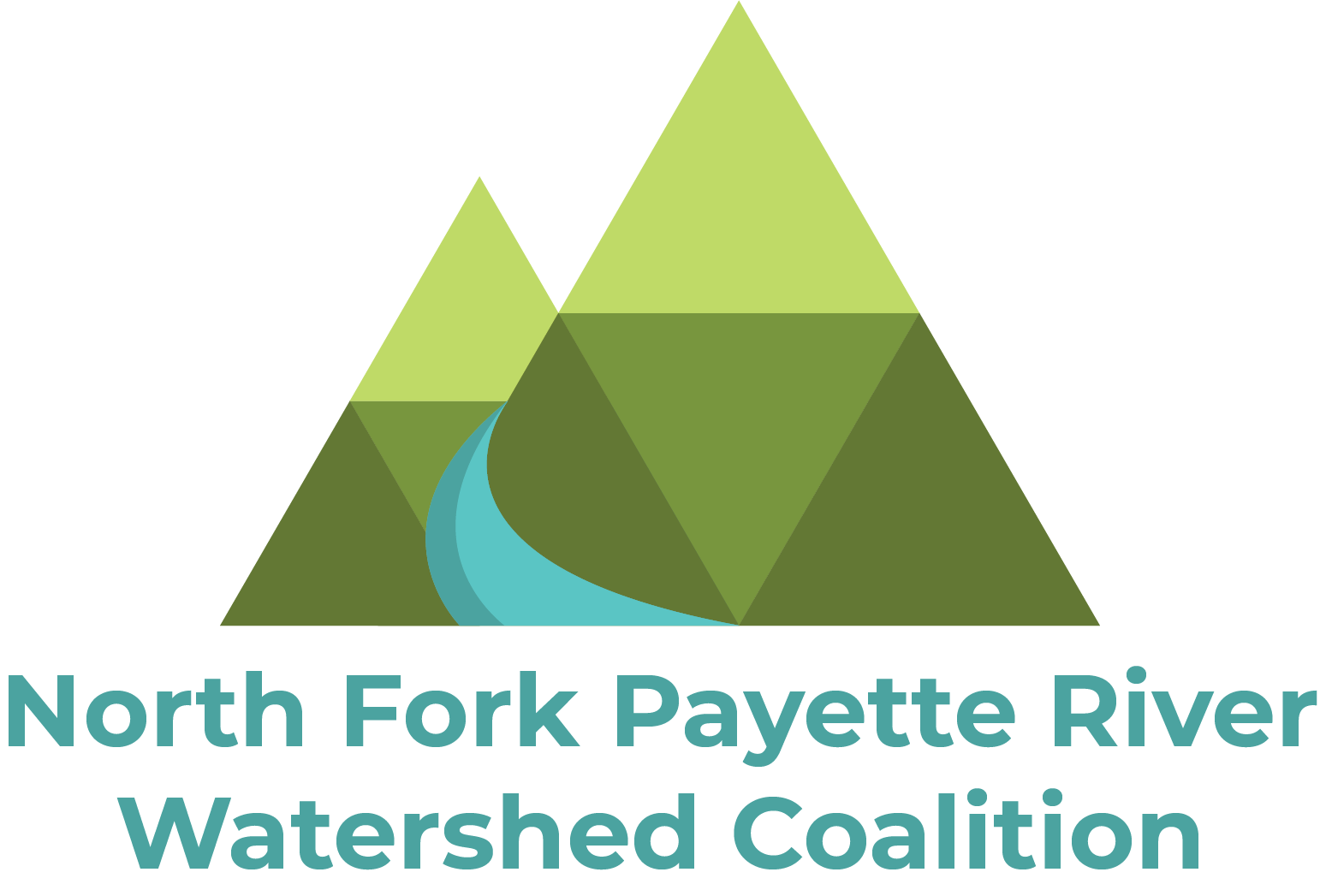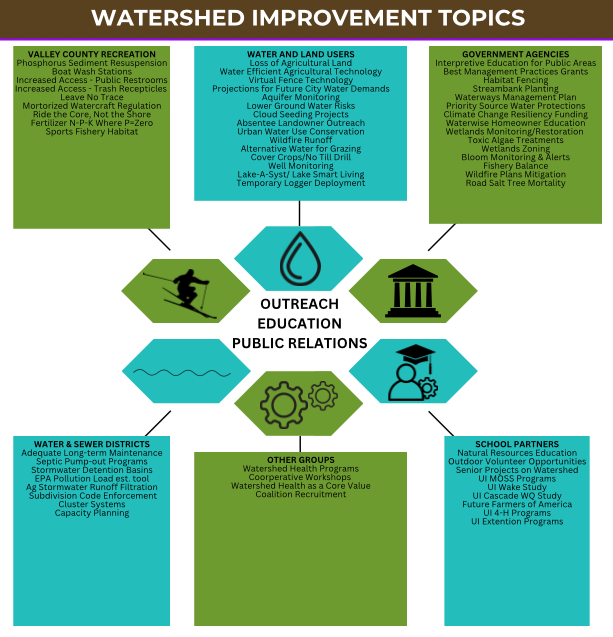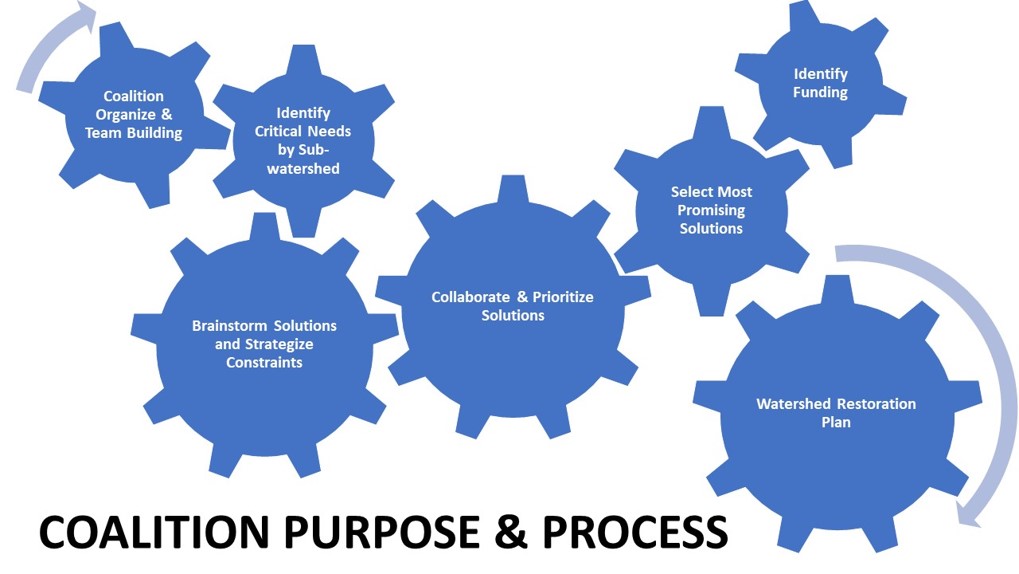North Fork Payette River Watershed Coalition
The goal of the coalition is to address watershed best management practices and water quality improvements within the North Fork Payette River (NFPR) watershed. We want to bring everyone’s voice, opinion, expertise, and passion to the table. Deteriorating water quality has an impact on us all.
The Coalition brings together public land and resource managers, municipalities, private industry, farmers, ranchers, irrigators, recreationists, developers, landowners, and the general public. This diverse set of stakeholders will work together to help identify and prioritize various issues in the watershed, develop a North Fork Payette River Watershed Restoration Plan, and access funding to implement solutions.
This project is overseen by the Valley Soil & Water Conservation District (VSWCD) and is funded by a USBR WaterSMART Cooperative Watershed Management Program grant.
How can you become involved?
If you value the streams, rivers, and lakes that make Valley County a great place to live, you belong with the Coalition!
Sign up for the NFPRWC Mailing List to stay updated with upcoming events and Coalition opportunities for public involvement.
Explore our North Fork Payette River Watershed Interactive Map to view watershed areas of concern and past/current watershed improvment projects that have been submitted by local community members.
Areas of Concern Submission Form or PDF Areas of Concern Submission Form and mail/email it to VSWCD
Watershed Projects Submission Form
Join a Watershed Breakout Group focused on your biggest watershed concerns. You can work with breakout groups at Coalition events or outside of our organized work times.
View our Meetings & Events Page and register for workshops!
State of the Watershed
The North Fork Payette River (NFPR) subbasin extends from upstream of Upper Payette Lake to Banks.
As you can see, this watershed, critical to local, domestic, wildlife, agricultural, and recreational water use, is impacted by nutrient loading, sediment inputs, and loss of cold-water habitat from many indirect sources.

These increasing pressures threaten the drinkability, economic potential, recreational use, natural beauty, and other beneficial uses of the waterways in the NFPR subbasin.
*Data collected by Idaho DEQ




